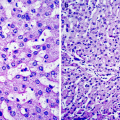and LI Ning2
(1)
Radiology Department, Capital Medical University Beijing You’an Hospital, Beijing, China, People’s Republic
(2)
Capital Medical University Beijing You’an Hospital, Beijing, China, People’s Republic
Abstract
Japanese researchers have found that the deterioration of influenzal encephalitis may be related to gene variation. They found that during the 2002–2003 influenza epidemic, some children with flu had their central nerves attacked by influenza virus to cause encephalitis. Influenzal encephalitis is different from other encephalitis. Children with influenzal encephalitis have no symptoms of spasm and conscious disturbance, but may have occurrence of sudden death (SD) during sleep. Children with serious influenzal encephalitis may die, with a death rate of 15 %.
10.1 Overview
Japanese researchers have found that the deterioration of influenzal encephalitis may be related to gene variation. They found that during the 2002–2003 influenza epidemic, some children with flu had their central nerves attacked by influenza virus to cause encephalitis. Influenzal encephalitis is different from other encephalitis. Children with influenzal encephalitis have no symptoms of spasm and conscious disturbance, but may have occurrence of sudden death (SD) during sleep. Children with serious influenzal encephalitis may die, with a death rate of 15 %.
10.2 Case Reports
Case 2.1
History of Present Illness . A 7-year-old Chinese boy was admitted due to confusion and incoherent speech. He had a history of bronchial asthma and received therapies in pediatrics department for upper respiratory tract infection 2 weeks ago. About 12 h after admission, he developed generalized tonic convulsion, which progressed into a decorticate posture with GCS 3/15 (E1V1M1), pupils 2.5 mm, eyesight horizontal, and sluggish reaction to light. Convulsion was controlled with anticonvulsants. His condition continued to deteriorate 34 h after admission with dilated and fixed pupils. The boy died on the 4th day of hospitalization.
Past history. Not found.
Laboratory Tests. ALT 5–25 IU/L; complete blood counts, blood glucose, renal and liver functions WNL. Nasopharyngeal excretions and throat swab tested on day 2 of hospitalization were positive for Influenza A (H1N1) virus. After autopsy, the further serum tests showed ANCA negative, anti-nuclear antibody at 1/240 positive, homogenous 1/80 positive, normal anti-double stranded DNA, anti-ribonucleoprotein antibody negative and anti-cardiolipin antibody level having no diagnostic value.
Figure 10.1a: MRI displayed severe cerebral edema and herniation inferior to cerebellar tonsils. Symmetrically bilateral lesions with abnormal high T2 signals were found in the deep white matter of the cerebral hemispheres, caudate nuclei, lenticular nucleus shell, internal capsule, lateral nucleus of thalamus, posterior thalamus, corpus callosum and tegmentum of brainstem.
Autopsy Findings. Cerebellar tonsillar and early bilateral temporal gyrus herniations were found. The dural veins and the cerebral arterial circle were normal. The lateral cerebral ventricles were like cracks. Symmetrically hemorrhagic necrosis or malasia were found in the head of caudate nucleus, corpus callosum, periventricular white matter, lateral nucleus of the thalamus, posterior thalamus and internal capsule.
Figure 10.1b: Coronal sections of the genu of corpus callosum, papillary body and the splenium of corpus callosum.
Pathological Changes. The extensive cerebral edema, vascular lesions and necrosis were considered to be the primary pathological changes. No perivascular demyelination was noted. The necrotic areas showed ghost liked shadow of necrotic cells. On the background of less cells and edematous nerve fibers network, pyknosis or karyoclasis fragments and red cell exudation can be found. No proliferations of stellate cells or microglia. Neurons ischemic shrinkage and pericellular edema was found in the cerebral cortex, hippocampus, cerebellum and brainstem. Some minor blood vessels in the brainstem also showed thrombosis. The extensive neuron ischemia, thrombosis in brainstem and cerebellar cone were pathological changes secondary to cerebral edema.
Figure 10.1c: Under a microscope, necrosis and vascular lesions were observed. The commonly occurring vascular lesion was exudative vascular lesions (EV) characterized by expanded perivascular space with accompanying fibrinous exudates and pseudo vacuoles, arterioles with diameters of 250 μm. EV occurred in minor veins and arteries throughout the brain including both the necrotic and non-necrotic areas. The vascular lesions also included necrotic vascular lesions (NV) and fibrinous vasculitis (FVL), found only in necrotic areas. The occurrence of fibrinous necrosis in vascular walls is characteristically NV, other pathological changes are common in NV and EV.
Figure 10.1d: A blood vessel with a diameter of 110 μm in the head of left caudate nucleus. In addition, lymphocytic and neutrophilic exudates in the vascular wall with FVL and perivascular space; karyoclasis with or without intraluminal thrombosis.
Figure 10.1e: A blood vessel with a diameter of 90 μm in the head of left caudate nucleus.
Figure 10.1f : A blood vessel with a diameter of 50 μm in the head of left caudate nucleus.
Stay updated, free articles. Join our Telegram channel

Full access? Get Clinical Tree




